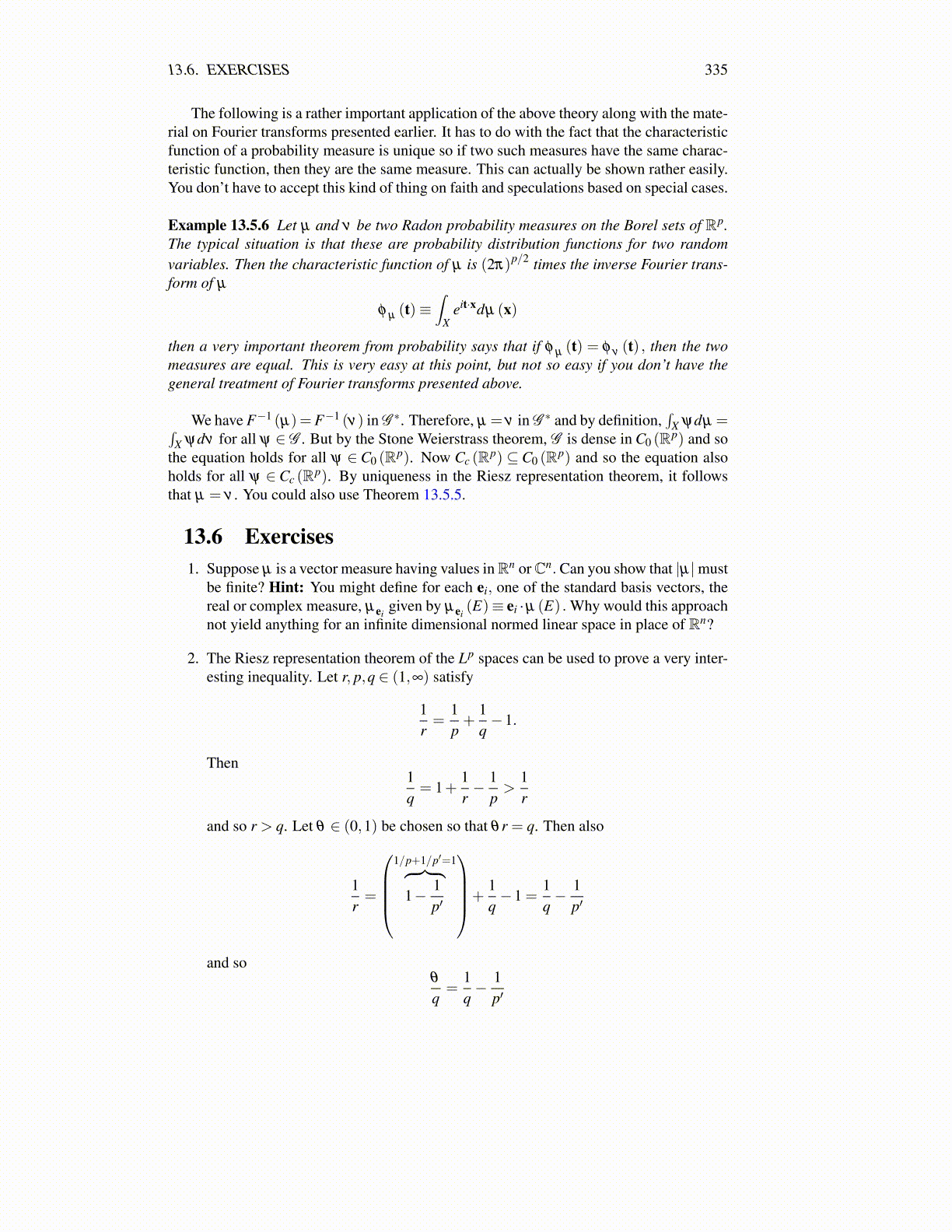
13.6. EXERCISES 335
The following is a rather important application of the above theory along with the mate-rial on Fourier transforms presented earlier. It has to do with the fact that the characteristicfunction of a probability measure is unique so if two such measures have the same charac-teristic function, then they are the same measure. This can actually be shown rather easily.You don’t have to accept this kind of thing on faith and speculations based on special cases.
Example 13.5.6 Let µ and ν be two Radon probability measures on the Borel sets of Rp.The typical situation is that these are probability distribution functions for two randomvariables. Then the characteristic function of µ is (2π)p/2 times the inverse Fourier trans-form of µ
φ µ (t)≡∫
Xeit·xdµ (x)
then a very important theorem from probability says that if φ µ (t) = φ ν (t) , then the twomeasures are equal. This is very easy at this point, but not so easy if you don’t have thegeneral treatment of Fourier transforms presented above.
We have F−1 (µ)=F−1 (ν) in G ∗. Therefore, µ = ν in G ∗ and by definition,∫
X ψdµ =∫X ψdν for all ψ ∈ G . But by the Stone Weierstrass theorem, G is dense in C0 (Rp) and so
the equation holds for all ψ ∈ C0 (Rp). Now Cc (Rp) ⊆ C0 (Rp) and so the equation alsoholds for all ψ ∈ Cc (Rp). By uniqueness in the Riesz representation theorem, it followsthat µ = ν . You could also use Theorem 13.5.5.
13.6 Exercises1. Suppose µ is a vector measure having values inRn orCn. Can you show that |µ|must
be finite? Hint: You might define for each ei, one of the standard basis vectors, thereal or complex measure, µei
given by µei(E)≡ ei ·µ (E) . Why would this approach
not yield anything for an infinite dimensional normed linear space in place of Rn?
2. The Riesz representation theorem of the Lp spaces can be used to prove a very inter-esting inequality. Let r, p,q ∈ (1,∞) satisfy
1r=
1p+
1q−1.
Then1q= 1+
1r− 1
p>
1r
and so r > q. Let θ ∈ (0,1) be chosen so that θr = q. Then also
1r=
1/p+1/p′=1︷ ︸︸ ︷
1− 1p′
+1q−1 =
1q− 1
p′
and soθ
q=
1q− 1
p′